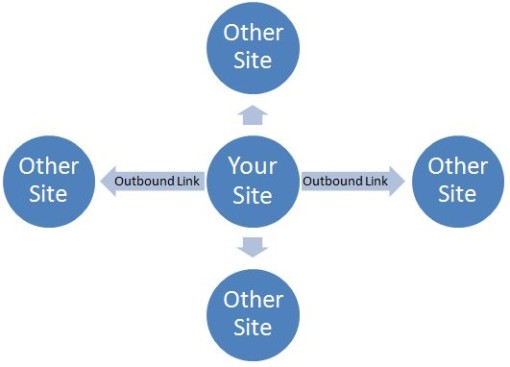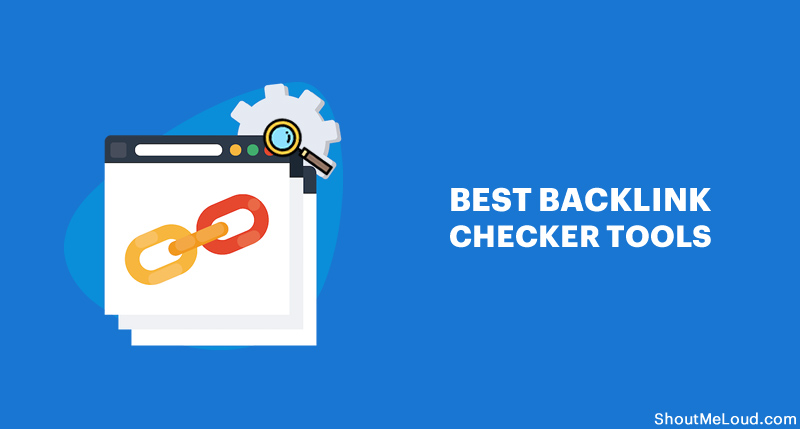
Google will not rank your blog if you only optimize its title. The web crawler wants to find keywords within your content, and a basic SEO strategy will make it easier for Google to index and display your content. Headings are another area you should focus on when optimizing your blog for SEO. These are important for readers to move through your content and search engine crawlers to see the hierarchy of what they are reading. Be sure to use keywords and phrases when creating headings.
Meta description
Use an organic tone when writing your meta description for SEO blogs. You can answer users' queries with your meta description, and show off your high-quality material. It's a bad idea to make a website look spammy. Writing for people, and not robots is the golden rule that will ensure you get more clicks. Here are some helpful tips for writing compelling meta descriptions.
Make it exciting: Include your main keyword within your meta description. Google does not consider your meta descriptions when indexing pages. However, it can be useful to draw attention to your page. It is important to keep your meta description between 140-161 characters. Make sure you bold the most important words. Your meta description should include a call-to-action, such a link to your site. A good meta description also has an appealing call to action.
The meta description is an opportunity to advertise your company. It is a great opportunity to get a user to click on your link and grab their attention. High-quality meta descriptions can boost your website's traffic and sales. To encourage users to act, the meta description should end with a call-to-action. Your meta description can be rendered useless if your description is too lengthy or contains outdated information.
In addition to being readable, a meta description can increase your click-through rate. If used properly, the meta description will increase your organic traffic and help you rank higher in search engines. Google's search engine results play a small role in the meta description. If your meta description does not meet the required standards, your page could be ranked on Page Four instead of Page One. If your blog has a low click-through rate, it is still worthwhile to add a meta description.
Keywords in the title
Make sure you are using focused keywords in the title. This will help you get the most out your SEO blog post. The title of your article will help you determine the direction of the content and the likelihood that it will reach your target audience. Search engines summarise web pages based upon the keywords found in the content. These crawlers can use improved technology to assess the quality of content. In order to increase your articles' search ranking, you should include specific keywords in their titles.
Crossfit training or crossfit gyms are good keywords to use if you own one. Make sure to use one keyword per article. Search engines may find too many keywords in one article spammy. This can make your content less valuable. Your articles will rank higher for long-tail keywords than they do for short-tail keywords. These phrases are a great method to rank higher on Google for a specific keyword.
The title of your SEO blog should be between 60-70 characters. The title tag should include the key phrase as close to its start as possible. You should also use your chosen keyword to convey the benefit of your article. Keyword stuffing and boilerplate titles is a bad idea. Google warns about keyword stuffing. Therefore, make sure you use a strong focus keyword in your title and make sure that your audience can understand what it will get from your content.
It is only half of your battle to include keywords in the title. Your article title should not exceed 60 characters or more than 575 pixels. Make sure your title lives up to the promise you promised in the title, and make it easy for people to scan it and read. SEO is all about planning. Your title should be as effective and informative as possible.
Internal links

There are many ways to improve the search engine optimization (SEO) of your website or blog. One of them is to use internal links to direct users to different pages on your website. These links could lead to different product pages, or other content. This not only improves the user experience but also boosts search performance. Keep in mind that internal links are different from backlinks. Readers will not find them on their terms. But using internal links in the right places is one way to achieve this.
Adding relevant internal links in your blog is an SEO-friendly way to attract and retain readers. Most sites add different styles to their links, so it is important to choose the right words and anchor text when implementing a link strategy. Internal links, in addition to being relevant words, can increase the attention of your readers and encourage them to spend more time on your site. Use internal links that link back to relevant content, and provide a solution for the user.
As much as possible, all internal links should point at the main target keyword. Google won't penalize you for using exact match anchor text. However, it is unlikely that Google would. It shouldn't be keyword-stuffed. You should not manipulate your anchor text in order to improve your rankings. This tactic is against Google’s webmaster guidelines. This tactic is far more effective than you might imagine.
Another way to optimize internal links is to create content on topics related to your core service. For example, a landscaping company in Columbus generates 390 searches a month, far less than the search volume for the phrase "best smartphone." By strategically including internal links in your blog posts, you can enhance your SEO efforts. A good way to do this is to anticipate the questions that users will have when they browse your website.
Schema Markup
Schema Markup can be added to blog posts to improve your search engine rankings. To create schema markup, visit Google Structured Data Markup Helper. You can enter your website URL, select a category, and then paste the HTML code. This tool generates a tag manipulator and a rendered page in a new window. To tag individual elements, click the button.
There are three types in schema markup: NewsArticle TechArticle & Microdata. Depending on what the post contains, each type of schema markup can have different flags. NewsArticle is for articles about current events. TechArticle can include flags that indicate technical content. A HowTo article might have flags that indicate author's technical level and the program used.
Google has made it easier to create schema. You can tag data to see similar content in search results. Schema markup is a good way to increase brand awareness. Schema is a good way to promote your small business if it has a local office. Schema can be used to promote events and your business. Schema markup is a great way to improve your SEO blog posts. You can find the links below if you are unsure of what to use.
Schema optimization can help you optimize your content. The markup helps search engines understand the different elements of a site. Schema markup can help you identify ingredients, instructions, and ketogenic diets when you blog about food. Schema is also useful for reviewing blogs. Search engine rankings will improve if your content is more relevant to the query of the user.
Copyright for image

It is crucial to verify the permission of any images you plan on using for your SEO blog. Many PR agencies don't allow images to be shared from their websites. You may not have the right to use these images. To find out who owns the image, contact them directly. In many cases, the owner is more than willing to grant you permission to use the image. Here are some tips that will help you comply with the law.
Google images are not to be used. Before you use any image from Google, you need to get permission from its owner. Google allows images to be searched, but you need permission to use them. You can request permission to use the image if you have trouble finding it. This will ensure you don't violate any copyrights. Images copyrights are crucial in determining whether a blog is successful or a site that is banned by search engines.
You should ensure that you check the copyrights for any image that you plan to use on your blog. It's illegal to use images from Google Images. You can't steal images from Google Images without permission. This will discredit the original image creator and put you at risk of legal repercussions. If the owner has given permission, you may use public domain images or fair-use photos. If you still have any doubts, consult an intellectual property attorney.
Images used for SEO blogs must be of the same author and attribute. Funny or creative photos are more likely for use in SEO. However, you should always review the license terms. While some images can be used for free, others are subject to certain restrictions. Do not use images without permission from the author. If they're not royalty-free, you may be in violation of the copyright. Even worse, you could face a lawsuit, which will cost you a lot of money.
FAQ
How much does SEO cost?
SEO is a long-term commitment so you won’t see immediate returns. You should remember that the more people visit your site, the greater chance it will rank higher on search engines.
There are many factors that influence the price of each service. These include keyword competitiveness and location.
What is a PPC advertising?
Pay-per–click ads are text based advertisements that appear at top or bottom on a page.
These ads are extremely targeted so advertisers only pay for clicks.
PPC advertising works very similarly to Pay Per Call advertising. This will be discussed later.
How do SEOs work for me?
It is important to understand the needs of people searching for your company or products through search engines like Google. This will help you get a Google ranking. This guide will help to make sure your content is ranked highly by Google. Also, check out our content marketing guides.
First, create a plan. Next, consider the type of keywords that you wish to target. There are two types of keywords: broad keywords (like "digital marketing") and specific ones (like "seo").
Next, you'll need to choose a few goals: increasing brand awareness, driving leads, or boosting sales.
Once you've established your objectives, you are ready to start creating content. Here are some SEO-friendly tips.
After you have written your content, it is time to post it to your website or blog. If you have a site, this could mean updating the pages. If not, you'll need to hire a web designer who can help you set one up.
Link to your content from blogs and websites after publishing it. This will make your content more visible and increase its exposure.
Are Backlink Services Worth It?
Backlink services allow companies to purchase links to their websites through paid advertising. These links are placed by other websites that want to send visitors to their site. You can purchase them with either cash or a card.
How long does it take to see results from PPC Advertising?
Paid search results take longer than organic search results because there is no natural flow to them. If someone searches for something they expect to find the most relevant results on the first page. Paid search results need to work harder to convince people to pay money to advertise on your site.
Statistics
- 93%of online experiences today begin on search engines. (marketinginsidergroup.com)
- If two people in 10 clicks go to your site as a result, that is a 20% CTR. (semrush.com)
- 64% of marketers actively create SEO campaigns because they help hit multiple key performance indicators (KPIs), including increasing traffic, helping your site rank for relevant keywords, improving your conversion rate, and much more. (semrush.com)
- Deleting those 10k pages is one of the main reasons that he improved his site's organic traffic by nearly 90%: (backlinko.com)
- These guides are designed and coded 100% from scratch using WordPress. (backlinko.com)
External Links
How To
How to create a keyword strategic plan
Keyword research is an essential part of any SEO campaign. It helps you identify what people are looking for in search engines like Google or Bing. This information allows you to create content around these keywords. This information allows you focus on creating quality content related to specific topics.
Keywords should appear naturally on each page's pages. These keywords should not be placed at the end or in unnatural places. Use words that accurately describe the topic, and place them wherever they make sense. For example, you might use "dog grooming", instead of "dogs", or "grooming" for a topic like dog grooming. This makes the content easier to read and easier for users.
It's best not to overuse keywords. You'll need to invest time in creating high-quality content for keywords. If you spend too much time producing low-quality content, it's possible that your visitors won't be interested enough. You should keep backlinks to a minimum. But, backlinks can still be valuable to websites if they are used properly. They can increase your website's authority, helping to improve rankings.
It is especially beneficial to link to websites that are related. A product review blog that links to other products will help you rank higher in search engines.
This will result in more organic traffic coming from search terms related to your niche. Consider joining forums to help promote your site. They will most likely refer to your site back to you.